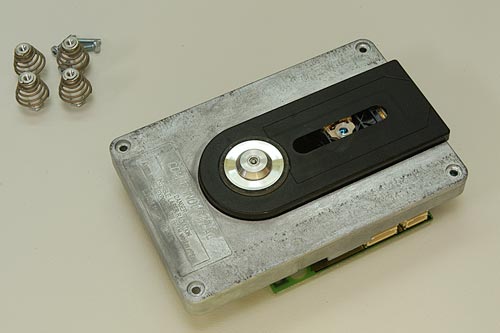True, the Levinson ML 390S uses a Philips laser reader: the CDM12 Industrial. Taken from the HiFi Advice site:
Not only Philips and Maranz used these transports: various other players were outfitted with these massive cast-iron swing-arm Rodenstock glass-lens mechanisms. Today, many of these products are still around, spinning CD’s as happily as before. They still produce excellent sound and as it turns out these transports are virtually indestructible.
CDM 12 IND (1994)
Of the various CDM12 incarnations, especially worth mentioning is the CDM12 IND, short for Industrial. This was the first generation of the CD Pro family of professional compact disc modules. It was the first to include a heavy die-cast metal frame and a servo/decoder circuit board as an integral part of the module. This mechanism was very successful in the high-end audio market as well as in the jukebox market, because of its robustness and reliability. The CDM12 Industrial can be identified by its extension plate, which reads “CDM 12 Industrial.” It’s model number will read “AH03.”
While it may seem that the CMD12 IND is nothing more than a cheap transport with a fancy housing, there are certain other details that have been improved such as double metal guide rails instead of the plastic slide pad of the cheaper models. Also, the CDM12 IND is fitted with a full metal spindle/disc turntable. This is an important aspect for its longevity because the plastic CDPro turntables had a tendency to crack over time.
The CDM12 IND is pin-compatible with the later CDPro and CDPro2 mechanisms. Also, the laser pickup part inside is compatible with that of a wide range of CDM12 mechanisms, such as the CDM12.4. While the turntable motor is not a part that tends to break down, it is also compatible with that of the simpler mechanisms.





 Reply With Quote
Reply With Quote Originally Posted by Barry
Originally Posted by Barry

